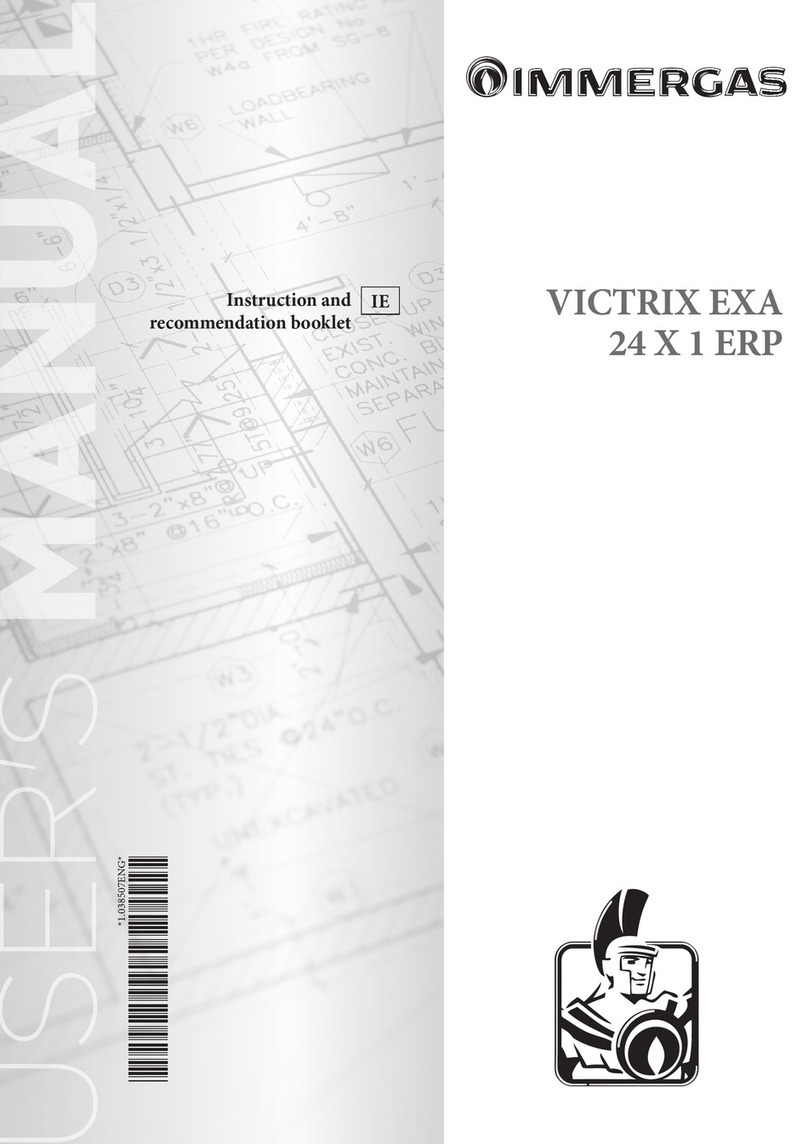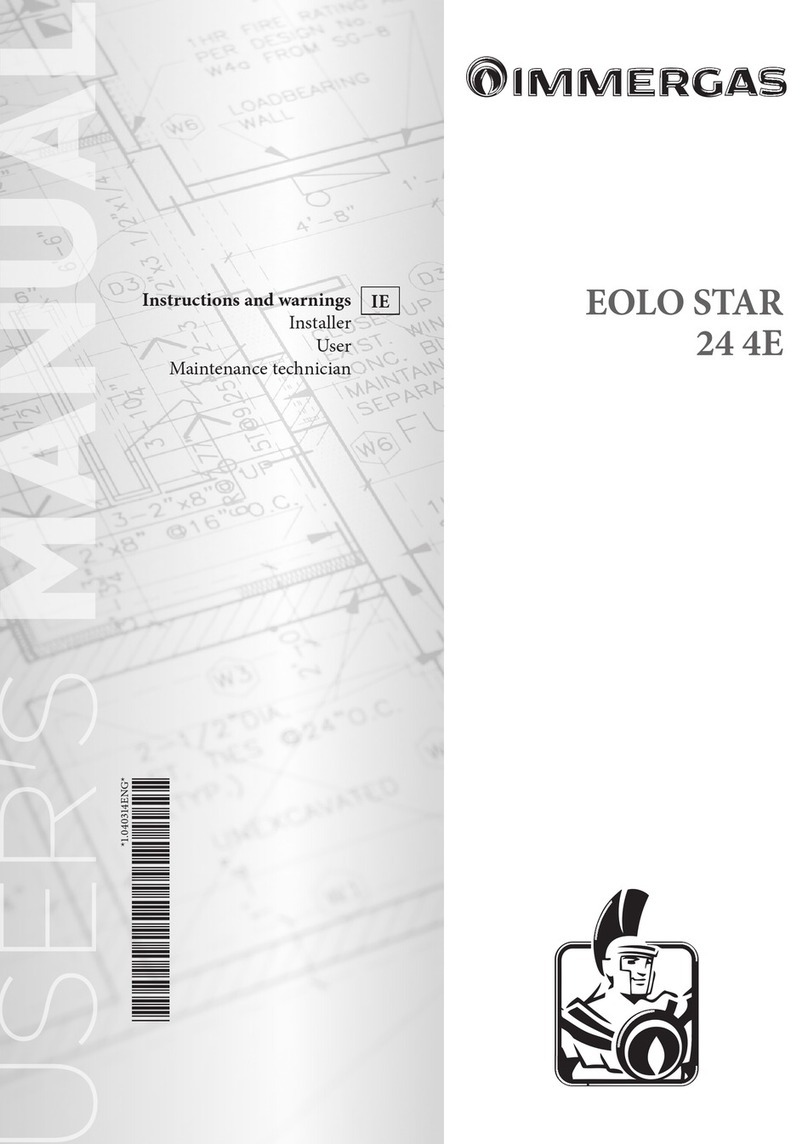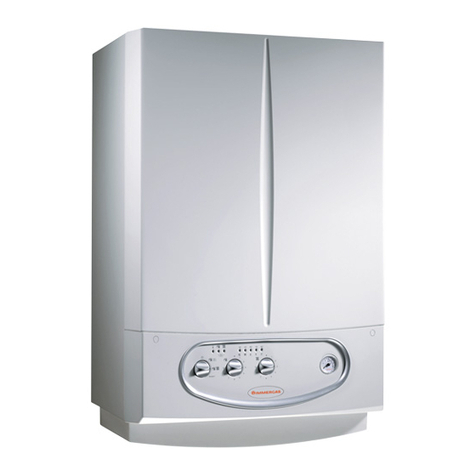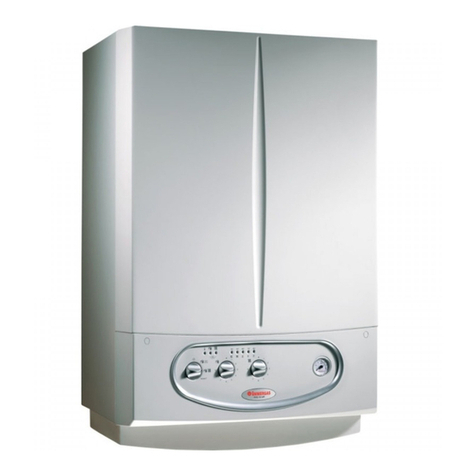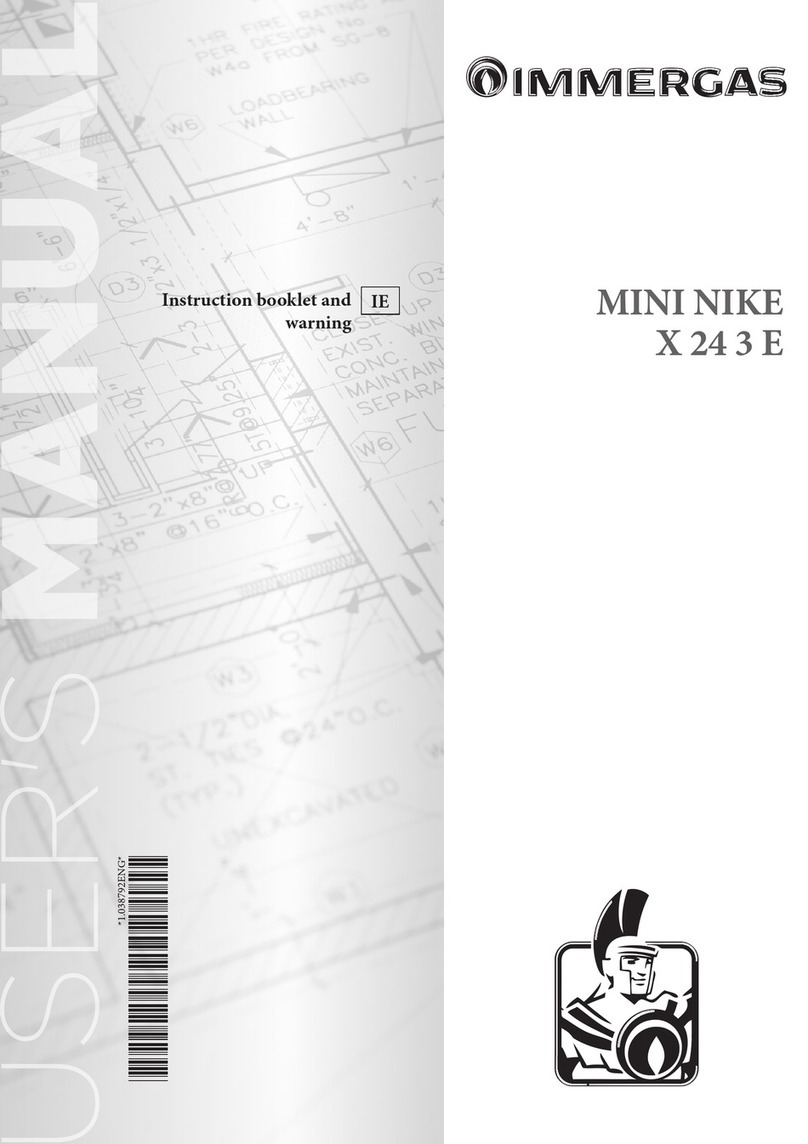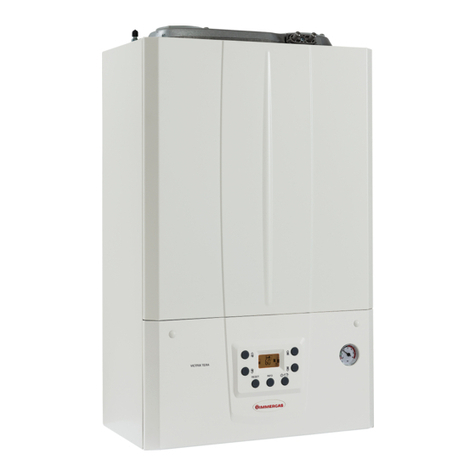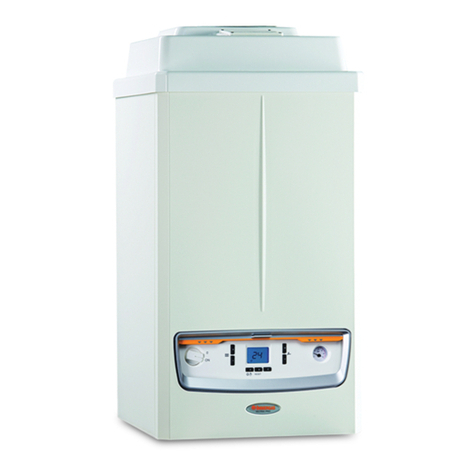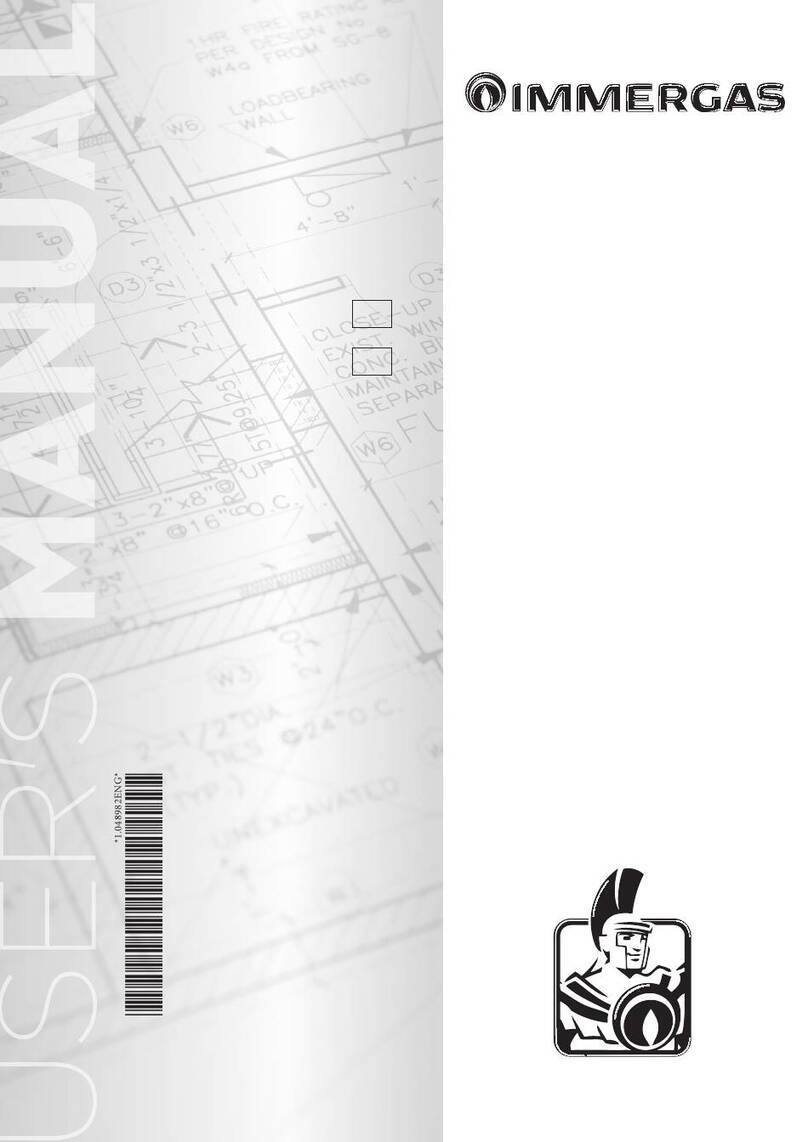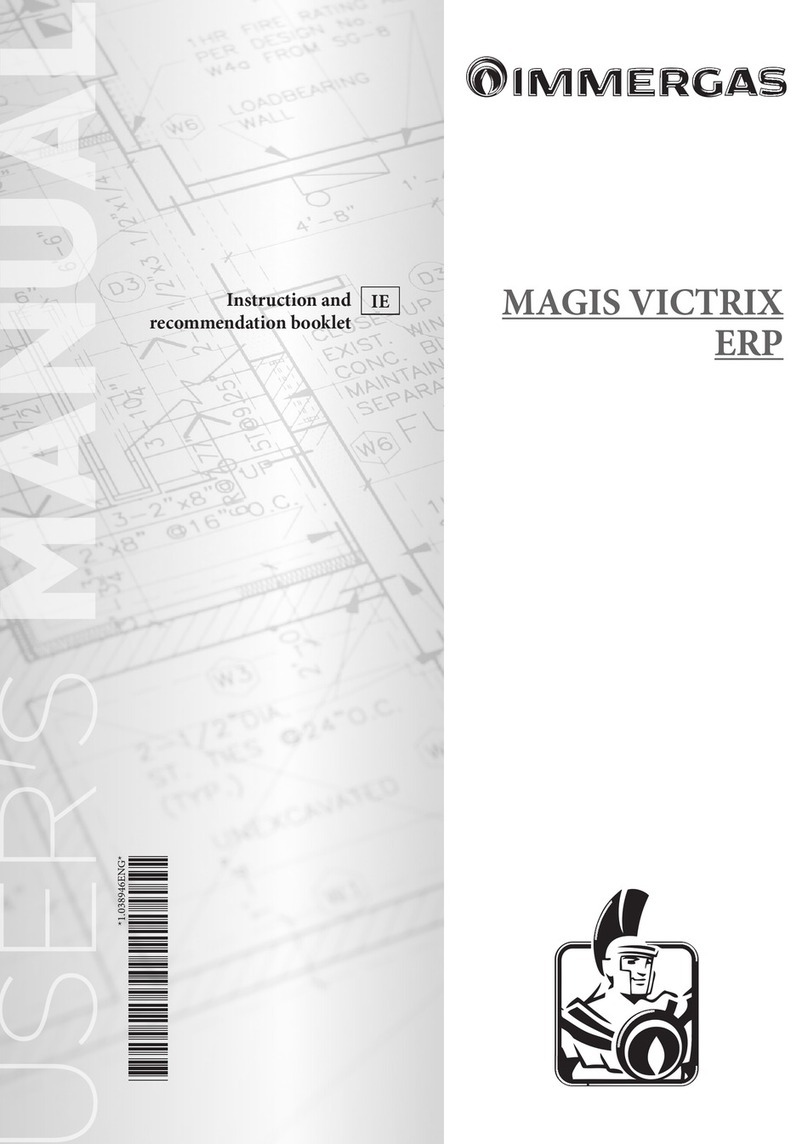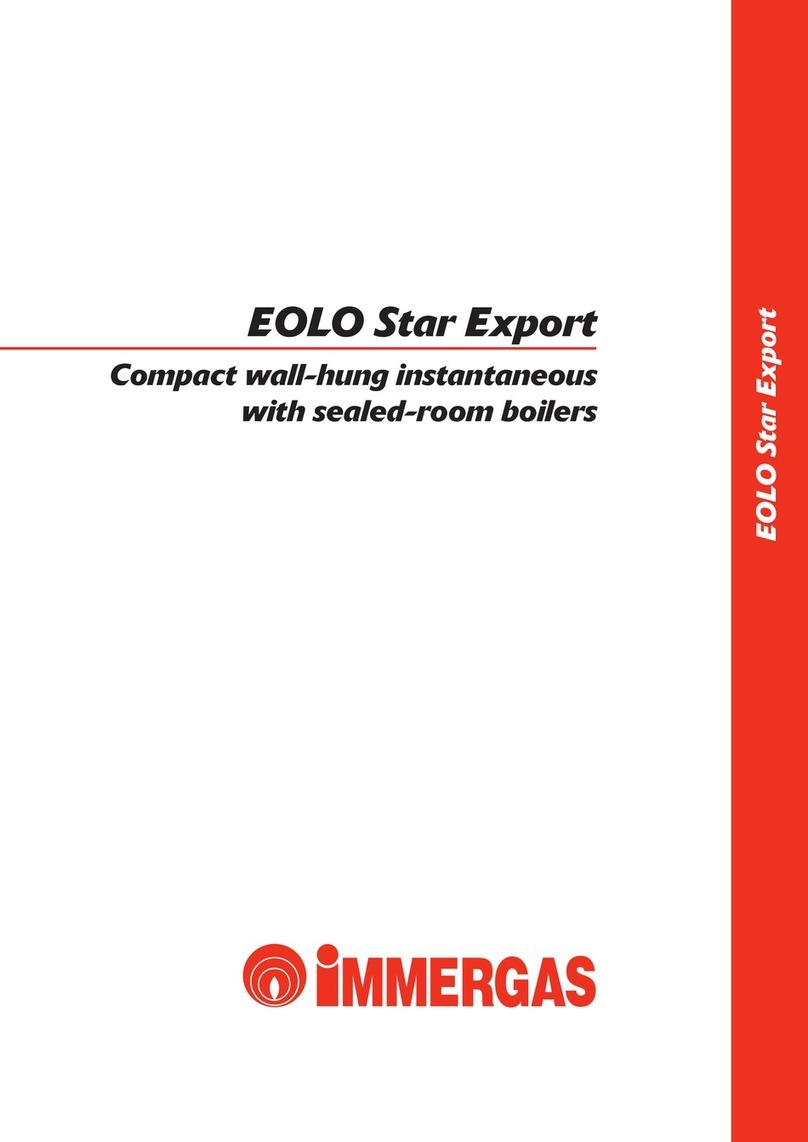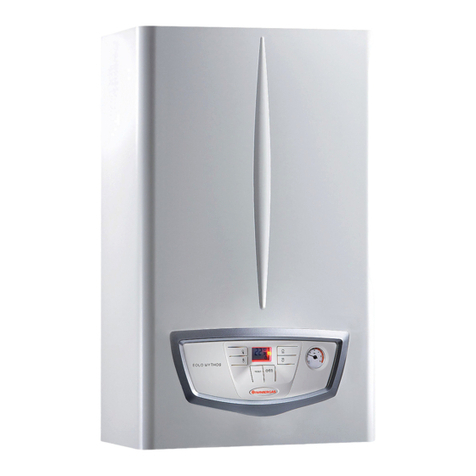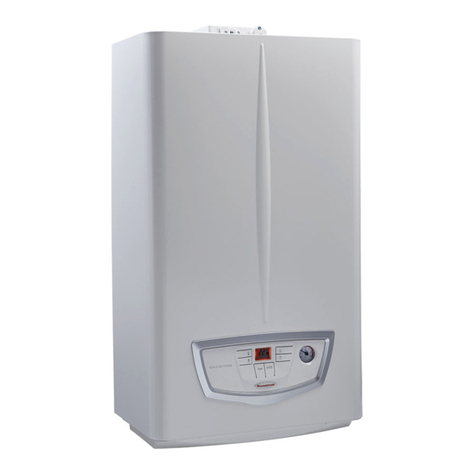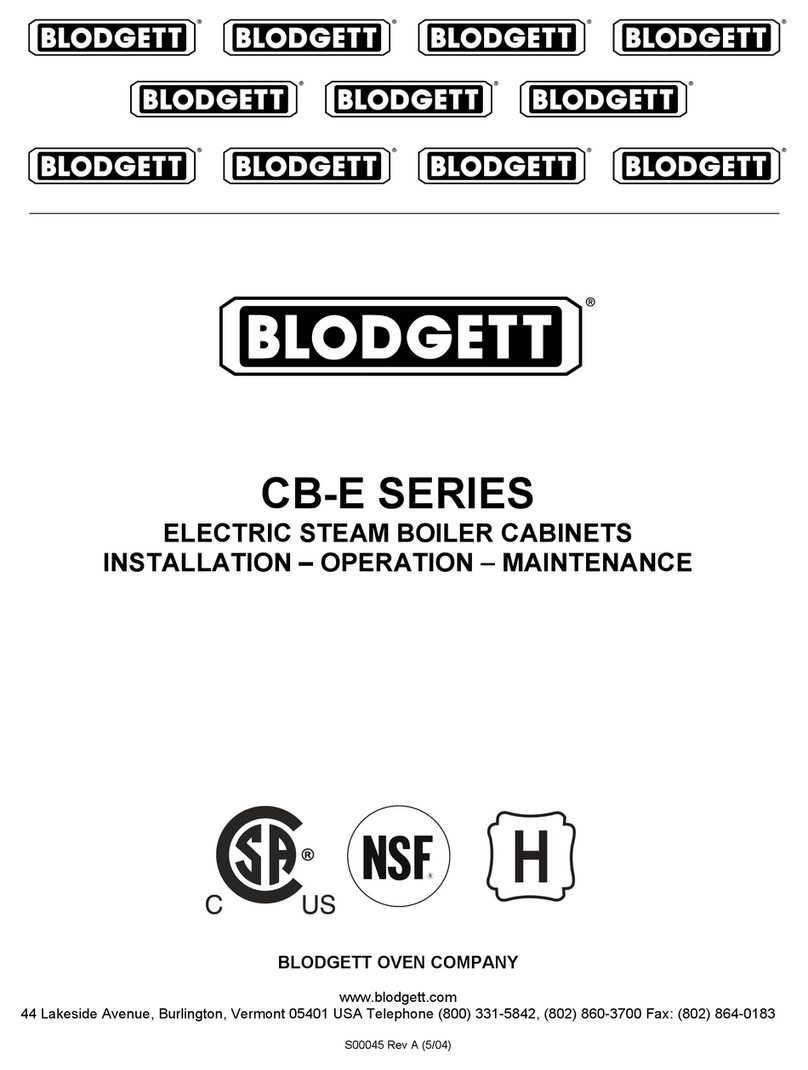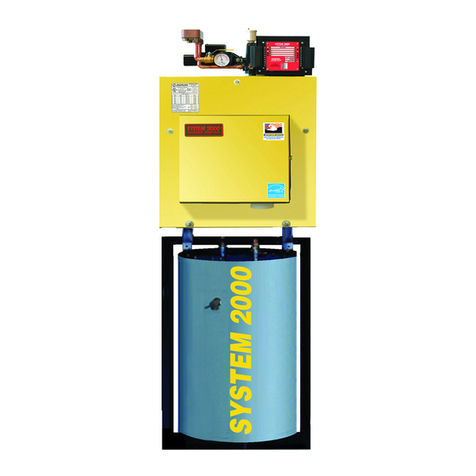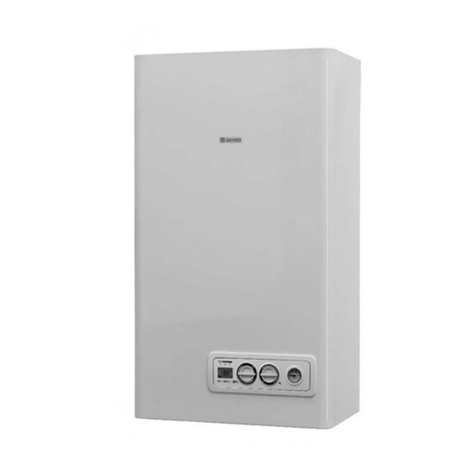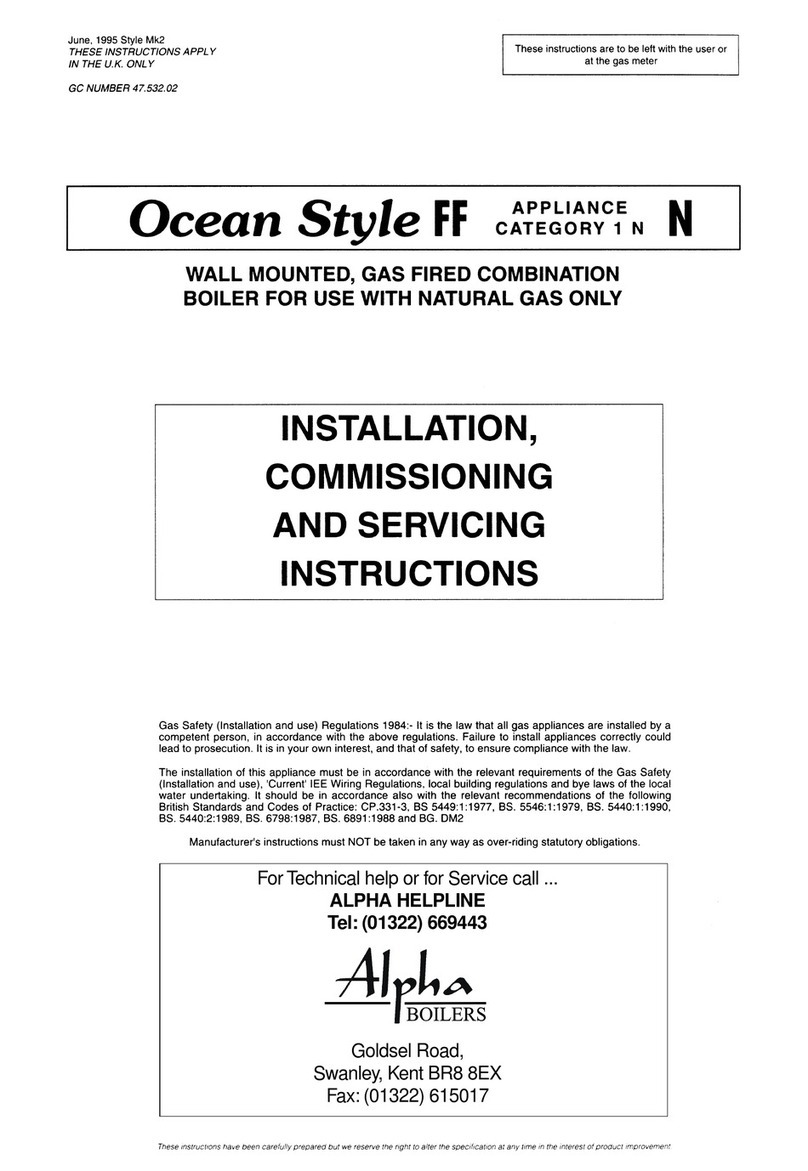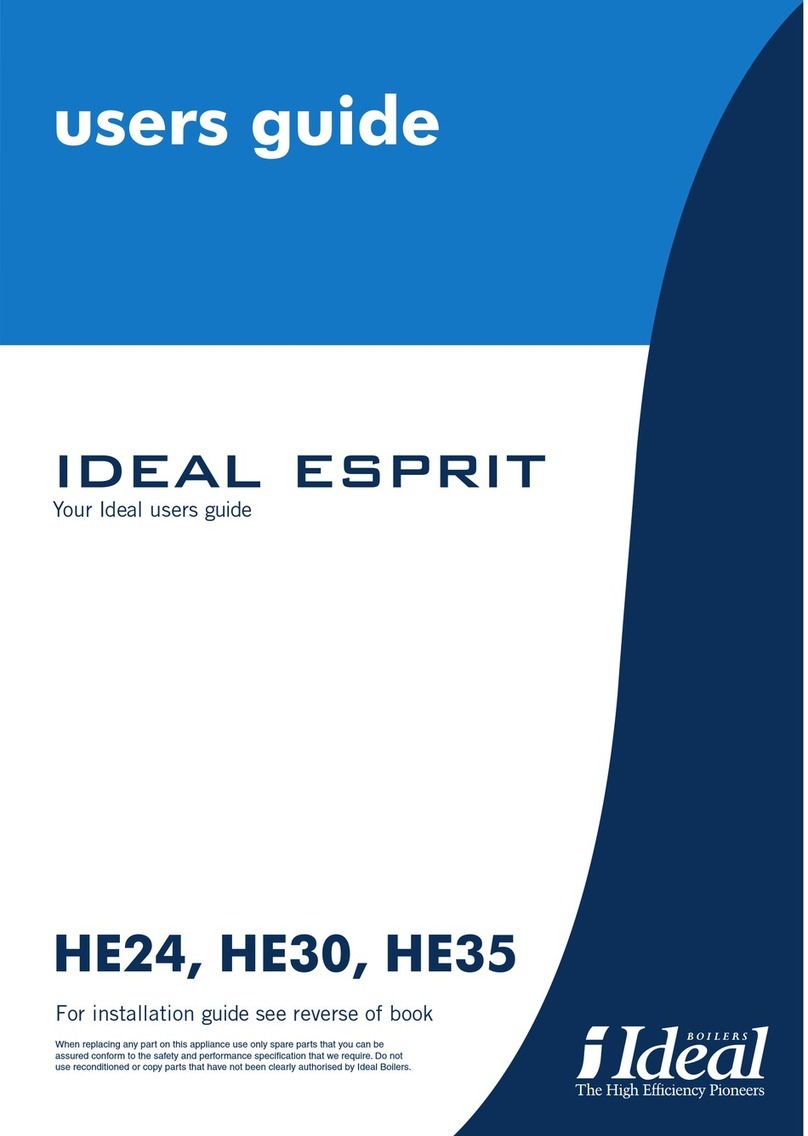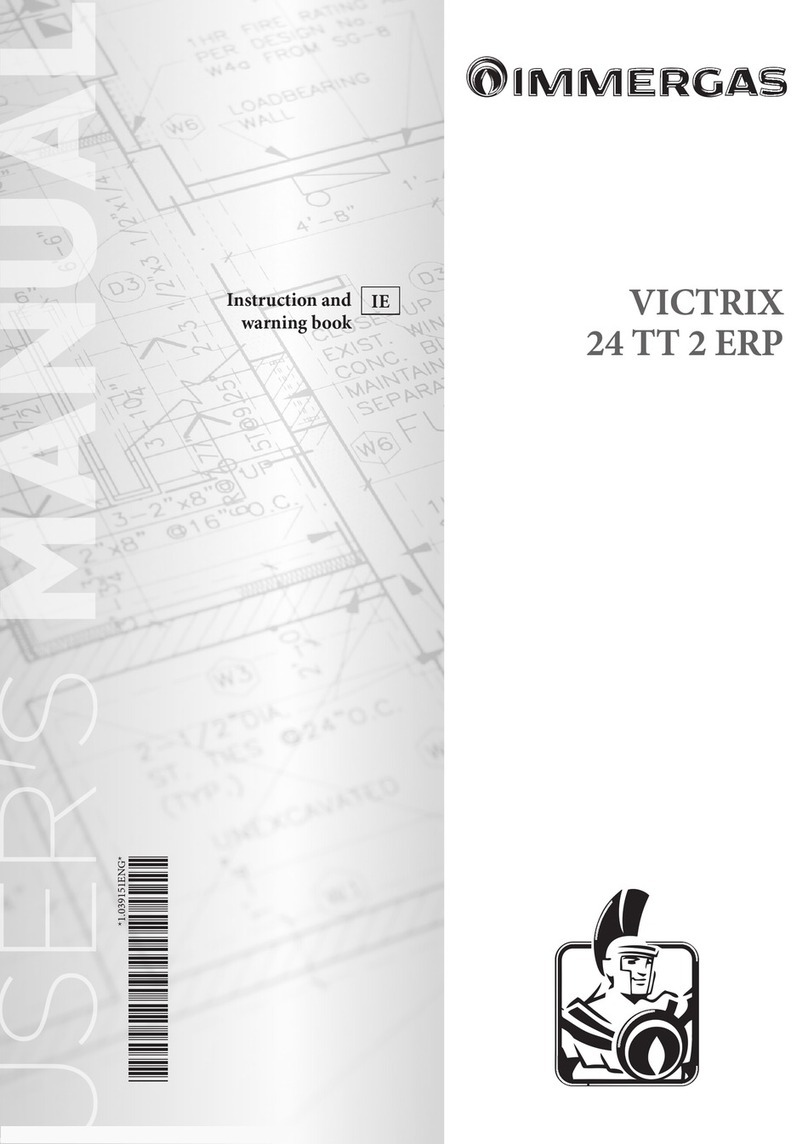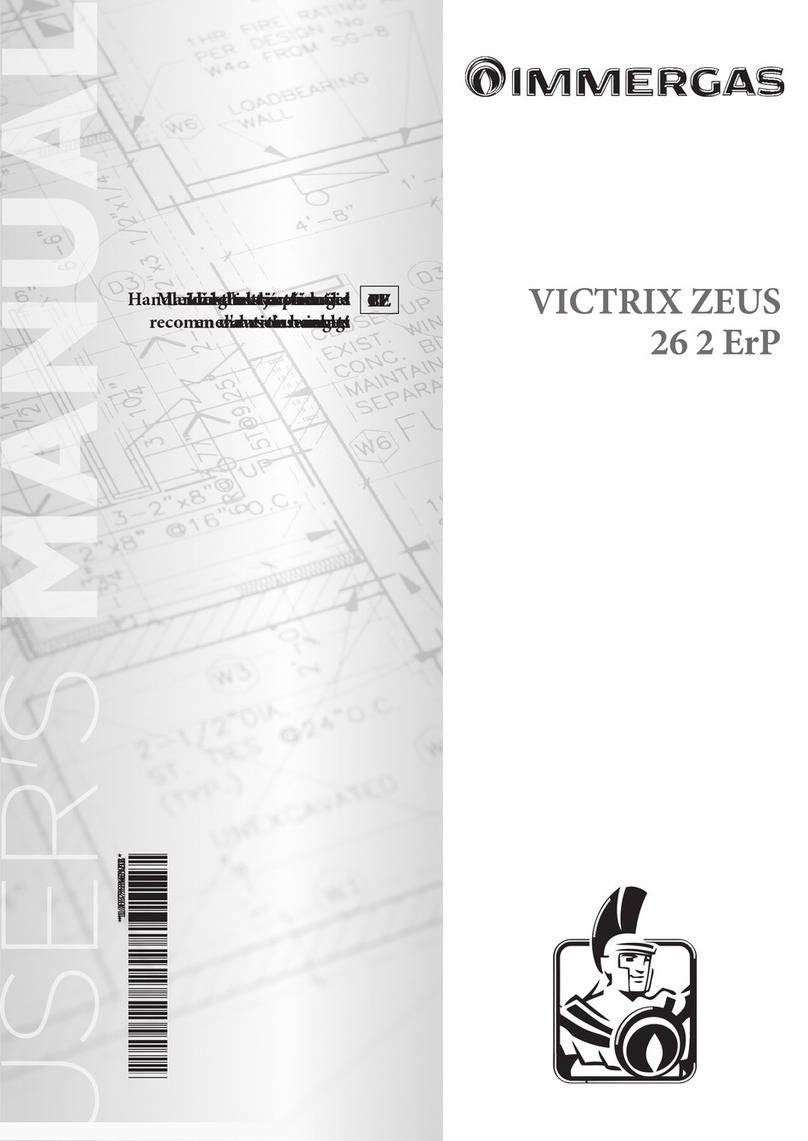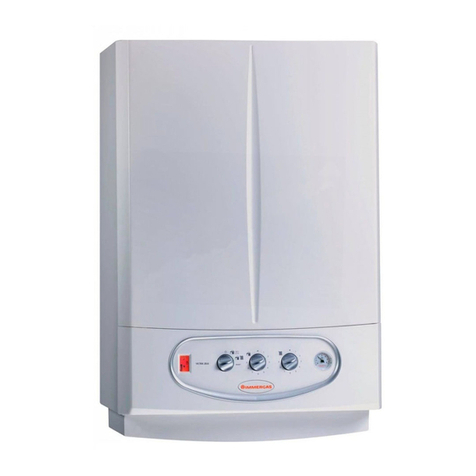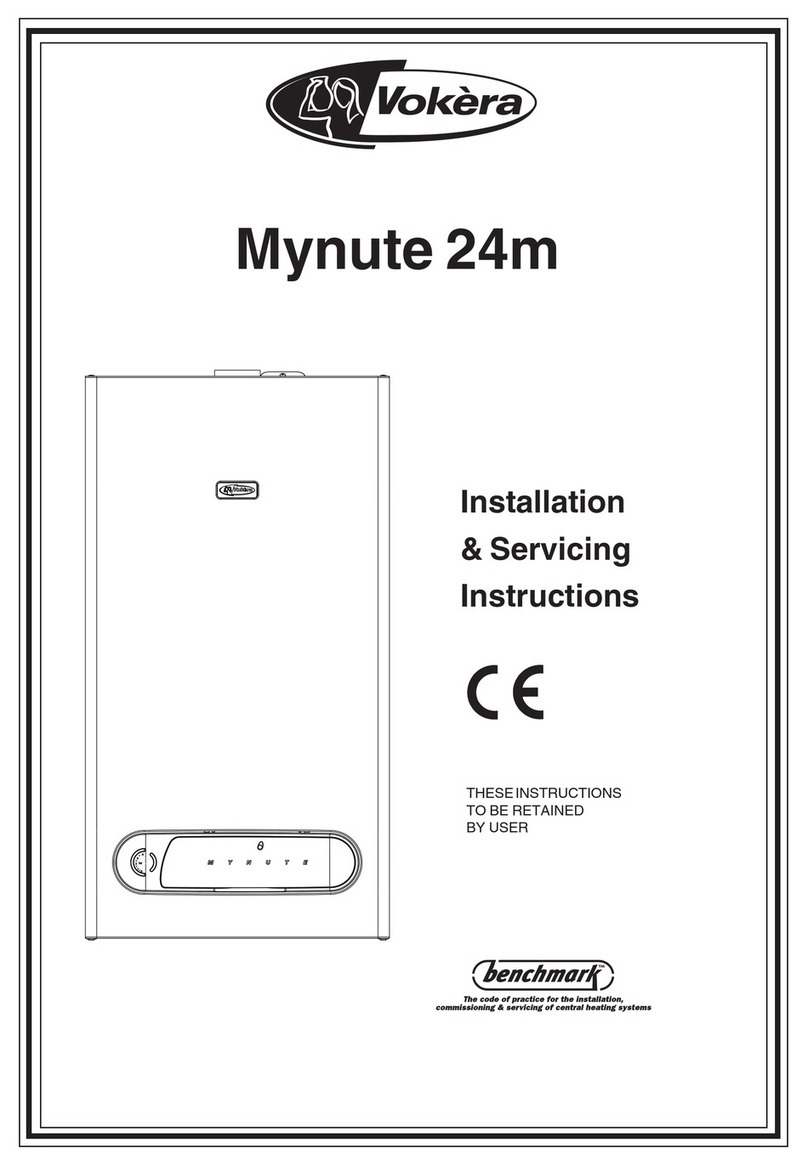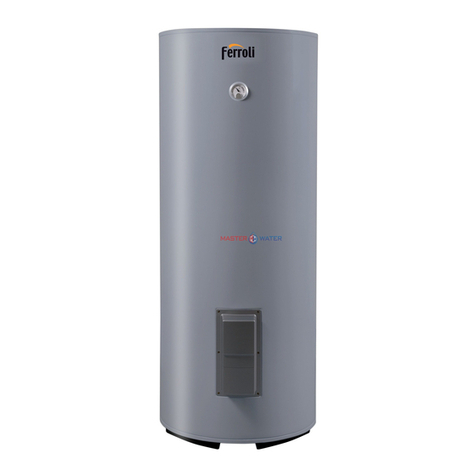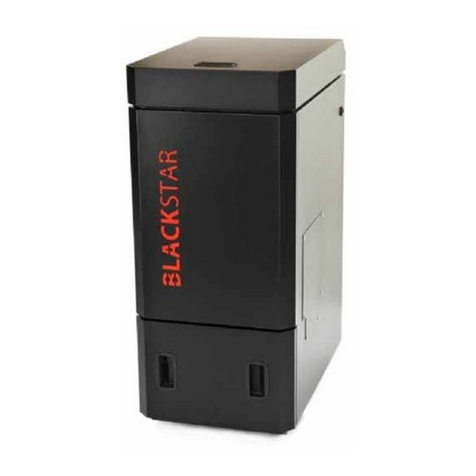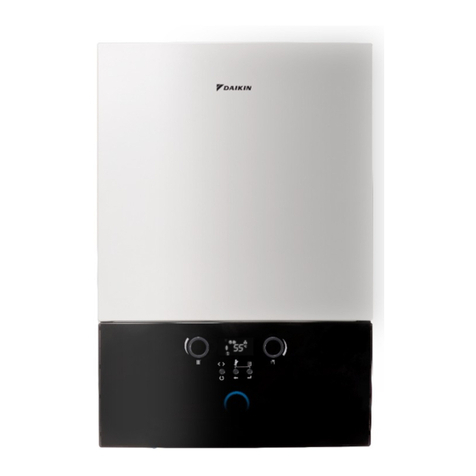
5
1
INSTALLERUSER
MAINTENANCE TECHNICIAN
1INSTALLATION
BOILER
1.1 INSTALLATION
RECOMMENDATIONS.
e Nike Star 24 boiler has been designed for wall
mounted installation only, for heating environ-
ments and production of domestic hot water for
domestic use and similar purposes.
e place of installation of the appliance and
relative Immergas accessories must have suitable
features (technical and structural), such as to al-
low for (always in safe, ecient and comfortable
conditions):
- installation (according to the provisions of
technical legislation and technical regulations);
- maintenance operations (including scheduled,
periodic, routine and special maintenance);
- removal (to outdoors in the place for loading
and transporting the appliances and com-
ponents) as well as the eventual replacement
of those with appliances and/or equivalent
components.
e wall surface must be smooth, without any
protrusions or recesses enabling access to the
rear part. ey are not designed to be installed
on plinths or oors (Fig. 1).
Only a professionally enabled company is
authorised to install Immergas gas appliances.
Installation must be carried out according to
regulation standards, current legislation and in
compliance with local technical regulations and
the required technical procedures.
Attention: the manufacturer declines all liability
for damages caused by boilers removed from
other systems or for any non-conformities of
such equipment.
Installation of the Nike star 24 boiler when
powered by LPG or propane air must comply
with the rules regarding gases with a greater
density than air (remember, as an example, that
it is prohibited to install plants powered with
the above-mentioned gas in rooms where the
oor is at a lower quota that the average external
country one).
Before installing the appliance, ensure that it is
delivered in perfect condition; if in doubt, contact
the supplier immediately. Packing materials (sta-
ples, nails, plastic bags, polystyrene foam, etc.)
constitute a hazard and must be kept out of the
reach of children. If the appliance is installed in-
side or between cabinets, ensure sucient space
for normal servicing; therefore it is advisable to
leave clearance of at least 3 cm between the boiler
casing and the vertical sides of the cabinet. Leave
adequate space above the boiler for possible water
and ue removal connections. It is just as impor-
tant that the intake grids are not obstructed. Keep
all ammable objects away from the appliance
(paper, rags, plastic, polystyrene, etc.). Do not
place household appliances underneath the
boiler as they could be damaged if the safety valve
intervenes (if not conveyed away by a draining
funnel), or if there are leaks from the hydraulic
connections; otherwise, the manufacturer cannot
be held responsible for any damage caused to the
household appliances.
In the event of malfunctions, faults or incorrect
operation, turn the appliance o and contact an
authorised company (e.g. the Authorised Tech-
nical Assistance centre, which has specically
trained sta and original spare parts). Do not
attempt to modify or repair the appliance alone.
Failure to comply with the above implies personal
responsibility and invalidates the warranty.
• Installation Standards:
- installation of these boilers in bedrooms,
studio ats and bathrooms, or in premises
where there are wood red heaters (or solid
fuel heaters in general) and in premises next
to or connected to them, is subject to the
regulatory/legislative provisions in force in
the country.
- Installation in places with a re risk is pro-
hibited (for example: underground car parks,
garages), potentially dangerous places, gas
appliances and relative ue ducts.
- Installation is prohibited on the vertical
projection of the cooking surface.
- Installation is forbidden in places/rooms
that constitute public areas of apartment
buildings, internal stairways or other escape
routes (e.g. landings, entrance halls, etc.) un-
less otherwise provided by local regulations.
- Installation is also forbidden in places/rooms
that constitute public areas of apartment
buildings such as cellars, entrance halls, attics,
los, etc., unless otherwise provided for by
local regulations in force.
- Type B open chamber boilers must not be
installed in places where commercial, artisan
or industrial activities take place, which use
products that may develop volatile vapours
or substances (e.g. acid vapours, glues, paints,
solvents, combustibles, etc.), as well as dusts
(e.g. dust deriving from the working of wood,
coal nes, cement, etc.), which may be dam-
aging for the components of the appliance
and jeopardise functioning.
- ey must also be installed in an environment
in which the temperature cannot fall below
0°C. ey must not be exposed to atmospher-
ic agents.
- is natural draught boiler can be connected
only to a multiple branched ue served by
a variety of users in existing buildings. e
boiler takes the combustion air directly from
the installation room and is equipped with
draught-breaker/anti-wind device. Due to
lower eciency, any other use of this boiler
must be avoided as it would lead to greater
consumption and higher operating costs.
- For the right functioning of the Nike Star, the pipe
the boiler is connected to is to have a minimum
vacuum equivalent to the fan assisted of 1 meter
of vertical pipe with a diameter of 130 mm.
Attention: wall mounting of the boiler must
guarantee stable and ecient support for the
generator.
e plugs (standard supply) are to be used only
in conjunction with the xing template to x the
boiler to the wall; they only ensure adequate sup-
port if inserted correctly (according to technical
standards) in walls made of solid or semi-hollow
brick or block. In the case of walls made from
hollow brick or block, partitions with limited
static properties, or in any case walls other than
those indicated, a static test must be carried out
to ensure adequate mount.
N.B.: the hex head screws supplied in the blister
pack are to be used exclusively to x the relative
mounting bracket to the wall.
ese boilers are used to heat water to below
boiling temperature in atmospheric pressure.
ey must be connected to a central heating
system and domestic hot water circuit suited to
their performance and capacity.
YES NO




















